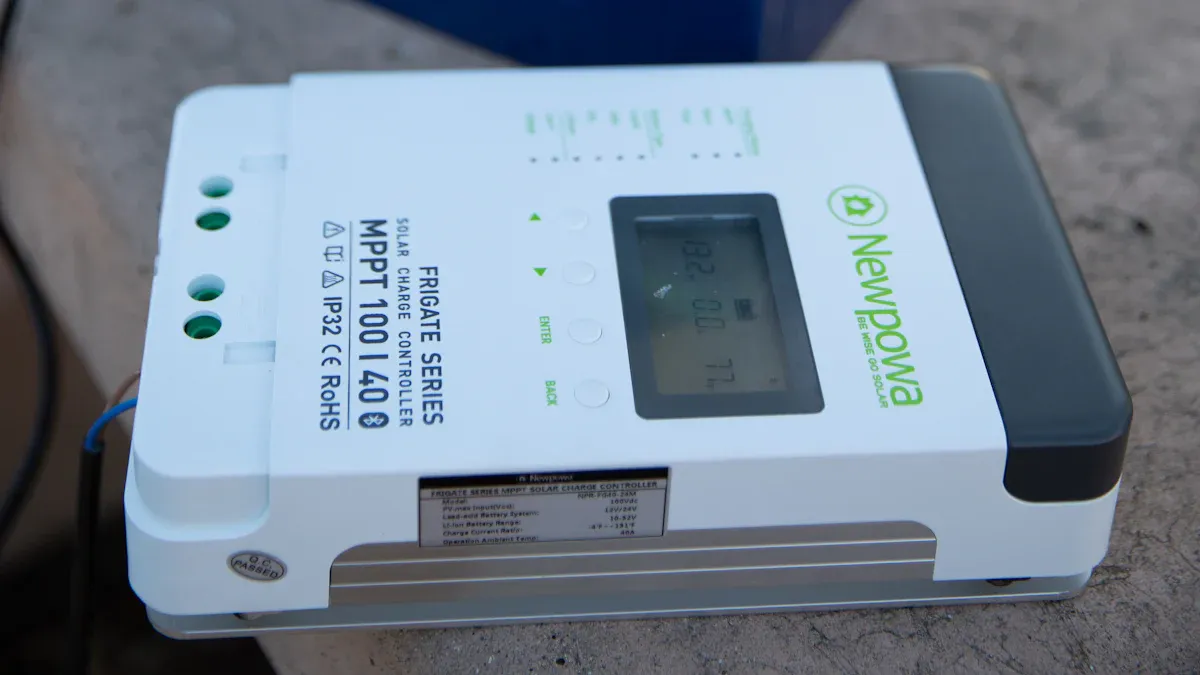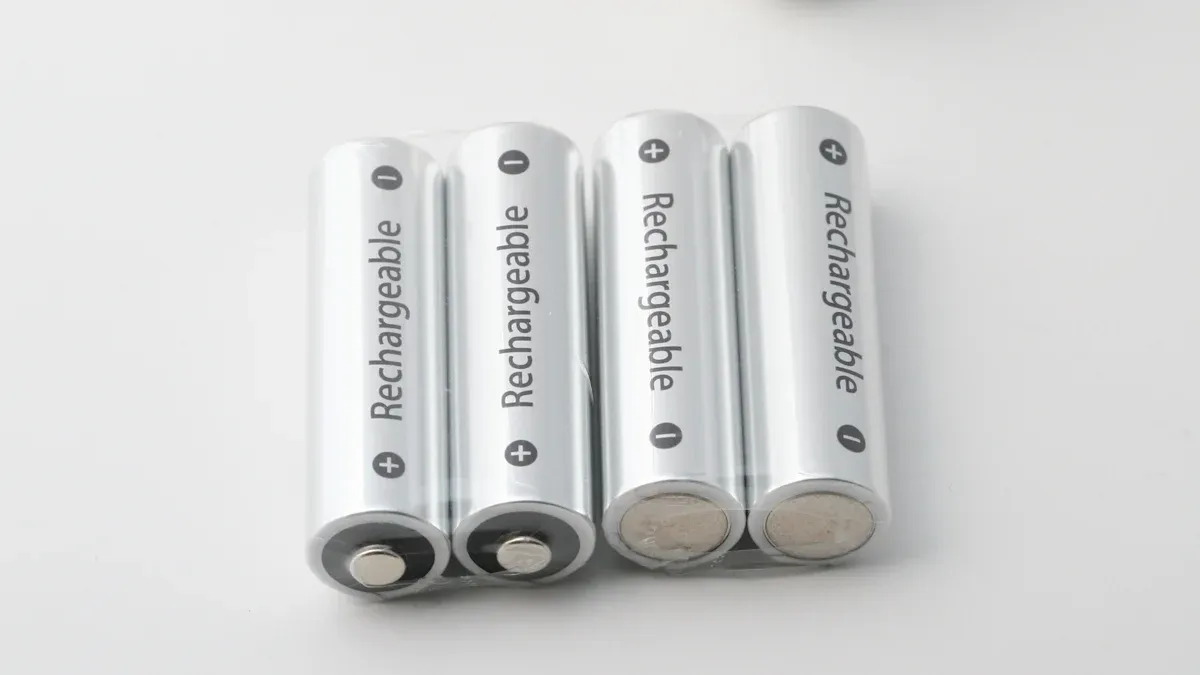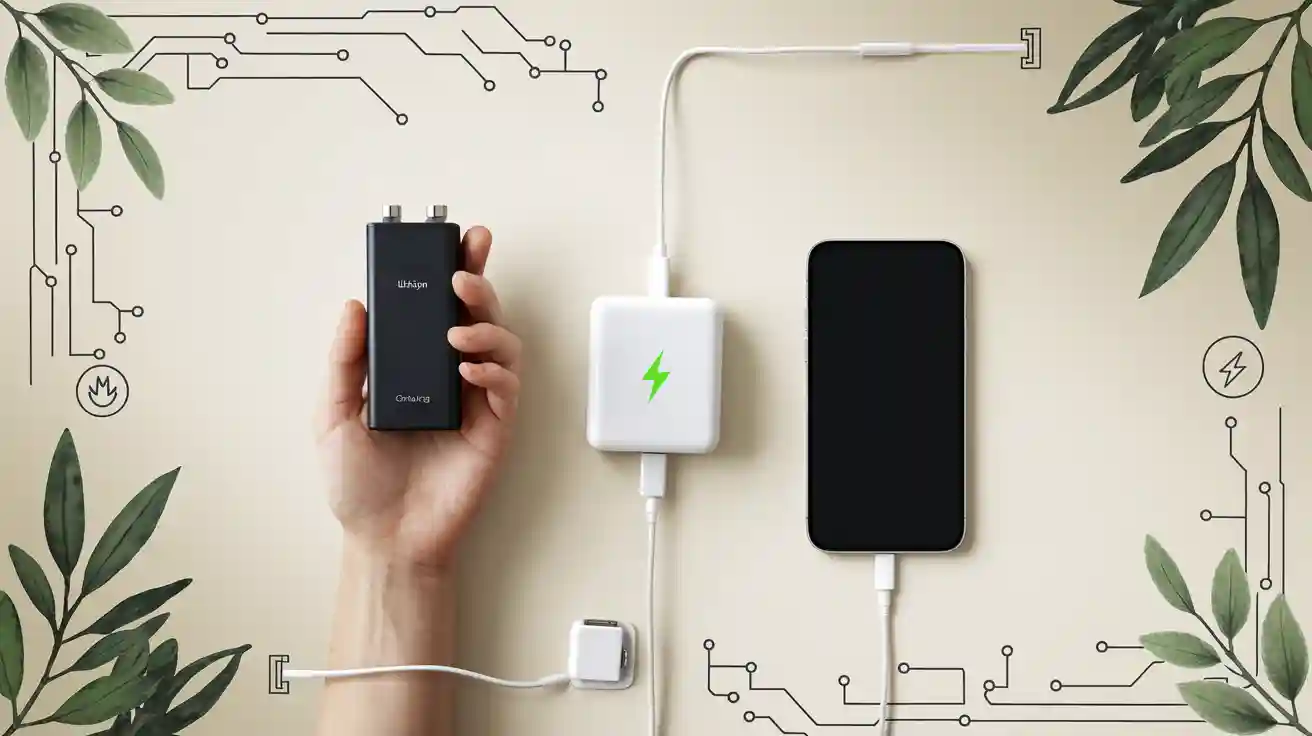How to Charge Lithium ion Battery?
To charge lithium ion battery safely, check your battery level first. Always use a compatible charger. Begin the charging process in a cool, dry place and disconnect when the battery reaches full charge. Charging lithium-ion batteries correctly can extend their lifespan:
- Lithium-ion batteries generally last between 2 to 10 years when charged according to manufacturer recommendations.
Key Takeaways
- Always check the battery level before charging. Start charging when the battery is above 20% to maintain its health.
- Use a compatible charger that matches the battery's specifications. This prevents overheating and extends battery life.
- Disconnect the charger once the battery is fully charged. This avoids overcharging, which can damage the battery and reduce its lifespan.
Charge Lithium Ion Battery: Steps

Check Battery Level
Before you begin to charge lithium ion battery, always check the current battery level. Most devices display the remaining charge on a screen or with indicator lights. Charging lithium-ion batteries when they are not deeply discharged helps maintain their health. Avoid letting the battery drop below 3.0V. Charging below this voltage can cause permanent damage to the battery’s internal chemistry and reduce its capacity. If the battery level is already low, start the charging process promptly to prevent over-discharging.
Use Compatible Charger
Selecting the right charger is essential when you charge lithium ion battery. Using an incompatible charger can cause overheating, thermal runaway, or even fire. It can also lead to overcharging, which damages the battery and shortens its lifespan. Undercharging reduces the battery’s effective capacity and performance. To ensure safety and efficiency, always check these specifications:
- Battery chemistry: The charger must match the lithium-ion type.
- Voltage: The charger’s output voltage should correspond to the battery’s rated voltage.
- Ampere rating: The charger’s current rating must align with the battery’s capacity.
- Battery compatibility: Confirm that the charger’s specifications meet the battery’s requirements.
⚠️ Tip: Using the wrong charger can generate excessive heat, delay charging times, and stress the battery, leading to decreased performance.
Two-Stage Charging Process
Charging lithium-ion batteries involves a precise two-stage charging process. This method protects the battery and maximizes its lifespan.
-
Constant Current Phase:
The charger applies a steady charge current to the battery. During this phase, the battery voltage rises steadily. This stage continues until the battery reaches its maximum voltage, which is typically 4.2V per cell for most lithium-ion batteries. -
Constant Voltage Phase:
Once the battery reaches the target voltage, the charger switches to constant voltage mode. The voltage remains stable, and the current gradually decreases as the battery approaches full charge. This phase ensures the battery is safely topped off without exceeding safe voltage limits.
? Note: Never charge lithium-ion batteries above the recommended voltage. Charging above 4.2V per cell can create safety hazards and reduce battery lifespan. Always avoid charging below 3.0V, as this can permanently damage the battery.
Disconnect at Full Charge
You should disconnect the charger once the battery reaches full charge. A lithium-ion battery signals full charge when it maintains a constant voltage at the target level, and the current drops to nearly zero. This behavior means the battery is no longer accepting charge. Leaving the battery connected to the charger after the full charge period increases the risk of thermal runaway, especially if there are manufacturing defects or design flaws. Overcharging can also degrade the battery’s capacity over time.
Risks of charging a fully charged battery include:
- Thermal runaway, which can lead to fire or explosion.
- Overheating from manufacturing defects or poor design.
- Reduced battery lifespan due to frequent charging to 100%.
✅ Best Practice: Disconnect the charger promptly at full charge to protect the battery and extend its service life.
Best Practices for Charging

Charging Lithium-Ion Batteries Safely
You should always follow best practices for charging to ensure battery safety and performance. Safe charging practices start with using a compatible and certified charger. Charging on a non-flammable surface and in a well-ventilated area reduces fire risks. The table below highlights essential safety precautions:
| Safety Precaution | Description |
|---|---|
| Use a compatible charger | Ensure the charger matches the battery’s specifications. |
| Avoid overcharging | Keep charging time as short as possible. |
| Monitor battery temperature | Check the battery’s temperature during charging. |
| Use a certified charger | Always use chargers that are certified for safety. |
| Choose a suitable charging environment | Select a cool, dry, and well-ventilated space for charging. |
| Use a safe surface for charging | Charge on a non-flammable surface, like metal. |
You should also monitor temperature throughout the process. If you notice swelling, odors, or leaks, stop charging immediately.
Environmental Conditions
Charging conditions play a major role in battery life. You should charge lithium-ion batteries between 10°C and 40°C. Charging below 0°C or above 45°C can damage the battery. Extreme cold can cause lithium plating, which leads to capacity loss and safety risks. High temperatures speed up chemical reactions, increasing the risk of thermal runaway. Always monitor temperature and keep batteries away from direct sunlight or heat sources.
Avoid Overcharging and Deep Discharge
To prevent overcharging, disconnect the charger once the battery reaches full capacity. Overcharging can cause heat build-up, cell damage, and even fire. Deep discharge also harms battery life by accelerating degradation and causing permanent damage. You should keep the charge between 20% and 80% for optimal performance. Shallow discharge cycles reduce stress and extend battery life.
Charge Lithium Batteries: Maintenance Tips
Proper maintenance supports battery life and safe charging practices. Store batteries at 15°C to 25°C and at about 40% charge. Recharge every 3-6 months during storage. Use the correct charger and avoid leaving batteries on the charger after reaching 100%. Regularly monitor temperature and charge current to prevent overcharging and overheating. Following these best practices for charging will help you maximize battery life and safety.
You can charge your battery safely by following these steps:
- Use a charger that matches your battery’s specifications.
- Charge in a cool, dry, and ventilated space.
- Apply the two-stage charging process for optimal battery health.
- Disconnect after full charge to prevent battery damage.
- Monitor battery temperature during charging.
Applying these practices helps you extend battery life and ensures safety.
FAQ
How often should you charge your battery?
You should charge your battery when it drops below 20%. Frequent shallow charges help maintain battery health and extend its lifespan.
Can you use any charger for your battery?
You must use a charger designed for your battery. Using the wrong charger can damage the battery or cause safety issues. Always check compatibility before charging.
What should you do if your battery overheats during charging?
Stop charging your battery immediately. Move the battery to a cool area. Contact support for advice. Never ignore overheating, as it can lead to serious safety risks.
-

 May.2025.11.24Ternary Lithium Battery vs Lithium-ion: Complete Comparison Guide (2025 Edition)Learn More
May.2025.11.24Ternary Lithium Battery vs Lithium-ion: Complete Comparison Guide (2025 Edition)Learn More -

 May.2025.11.214S2P 18650 14.8V Battery: Complete Technical Guide, Specs, Applications & SafetyLearn More
May.2025.11.214S2P 18650 14.8V Battery: Complete Technical Guide, Specs, Applications & SafetyLearn More -

 May.2025.11.18PCM vs BMS in Lithium Batteries: What’s the Difference and Which One Do You Need?Learn More
May.2025.11.18PCM vs BMS in Lithium Batteries: What’s the Difference and Which One Do You Need?Learn More -

 May.2025.11.17Custom Li-ion Battery Design for Medical Devices (2025 Comprehensive Guide)Learn More
May.2025.11.17Custom Li-ion Battery Design for Medical Devices (2025 Comprehensive Guide)Learn More -

 May.2025.11.17The Future of Lithium-Ion Batteries: Innovation, Sustainability, and Global Market TrendsLearn More
May.2025.11.17The Future of Lithium-Ion Batteries: Innovation, Sustainability, and Global Market TrendsLearn More
















